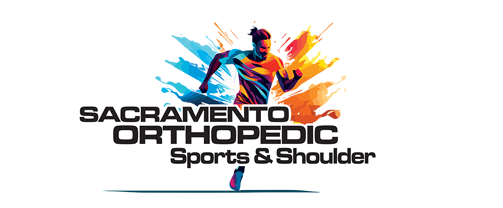Skiing is a beloved winter sport that combines breathtaking mountain vistas with the thrill of speeding down slopes. However, the exhilaration of skiing is not without its risks, particularly to the musculoskeletal system. Each year, countless skiers experience injuries that can be debilitating and season-ending. Understanding these common skiing injuries and how to prevent them is crucial for anyone looking to safely enjoy their time on the slopes.
Understanding Common Skiing Injuries
Skiing subjects the body to unique stresses and strains, particularly on the knees and shoulders, which are areas of high risk during skiing activities. Here are some of the most prevalent injuries associated with skiing:
- Knee Injuries: The knee is extremely vulnerable to injury during skiing. The most common knee injuries include:
- ACL (Anterior Cruciate Ligament) Tears: These occur when the ligament that helps stabilize your knee joint is torn, often due to sudden stops or changes in direction.
- Multi-ligamentous Knee Injuries: These involve damage to multiple ligaments in the knee and can result from severe falls or collisions.
- Shoulder Injuries: The shoulder is another common site for skiing injuries due to falls or direct impacts. These injuries can include:
- Shoulder Dislocations: Where the upper arm bone pops out of the shoulder socket.
- Acromioclavicular Joint Dislocations: Often called a separated shoulder, this injury affects the joint at the top of the shoulder.
- Muscle Injuries and Fractures: Skiing can lead to various muscular injuries such as strains and tears, as well as fractures due to falls or collisions with obstacles or other skiers.
Understanding these injuries and the mechanisms behind them is the first step in preventing them.
Preventing Ski Injuries: Tips and Strategies
To enjoy skiing safely, it’s crucial to take preventive measures. Here’s how you can reduce your risk of injury on the slopes:
- Pre-season Conditioning: The importance of conditioning before the ski season cannot be overstated. Engaging in specific exercises can prepare your body for the physical demands of skiing:
- Cardiovascular Training: Builds endurance and stamina necessary for long days on the slopes.
- Proprioceptive Training: Enhances balance and body awareness, which are crucial for managing the challenging terrain.
- Strength Training: Focuses on building the muscles used most during skiing, particularly those in the legs, core, and upper body.
- Warm-up Routines: Always start your skiing day with a proper warm-up. Stretching and warm-up exercises can significantly enhance muscle functionality and flexibility, which helps prevent injuries. Key warm-up exercises include:
- Stretching: To keep muscles flexible and reduce the risk of injury
- Leg Swings: To loosen the hips and legs.
- Arm Circles: To reduce the risk of shoulder injuries.
- Torso Twists: To prepare your core for twists and turns.
Gear and Technique
- Proper Equipment: Using the right skiing equipment is crucial. Make sure your ski boots fit properly, your bindings are correctly adjusted, and your helmet is in good condition.
- Ski Technique: Poor skiing technique not only reduces your efficiency but also increases your risk of injury. Consider taking lessons from a professional to improve your skills, particularly how to fall safely to avoid knee and shoulder injuries.
Why Choose Sacramento Orthopedic Sports & Shoulder for Skiing Injuries?
When injuries occur, having access to specialized orthopedic care can make a significant difference in recovery outcomes. Sacramento Orthopedic Sports and Shoulder stands out as a leading orthopedic practice for several reasons:
- Expertise in Sports Medicine: Led by Dr. Greg Takenishi, the clinic specializes in sports-related injuries. Dr. Takenishi’s expertise in knee, shoulder, and elbow surgery makes him particularly well-suited for treating common skiing injuries.
- Personalized Care: Dr. Takenishi is renowned for his personalized approach to treatment, which considers each patient’s specific needs, activity level, and health goals.
- Commitment to Athletes: The clinic’s dedication to helping athletes and active individuals achieve peak performance and optimal musculoskeletal health is evident in their comprehensive care approach.
Recovery and Rehabilitation
Recovering from a skiing injury requires patience and specialized rehabilitation strategies. At Sacramento Orthopedic Sports and Shoulder our team diagnoses injuries, provides treatment options, and guides patients on the proper road to recovery. We collaborate with experienced physical therapists who can provide tailored rehabilitation programs designed to help patients regain strength and mobility, and return to skiing and other activities safely. Some approaches may include:
- Physical Therapy: Utilizes targeted exercises to restore function and strength.
- Pain Management: Employs techniques to manage pain effectively during the recovery process.
- Injury Prevention Education: Offers guidance on how to prevent future injuries, including specific exercises and techniques to protect vulnerable areas like the knees and shoulders.
Final Thoughts
Skiing can be a safe and enjoyable sport with the right preparation and awareness of potential injuries. By conditioning the body in advance and practicing safe skiing techniques, you can significantly reduce your risk of injury. And should injuries occur, knowing you have experts like Sacramento Orthopedic Sports & Shoulder to turn to can provide peace of mind and the best possible care.

